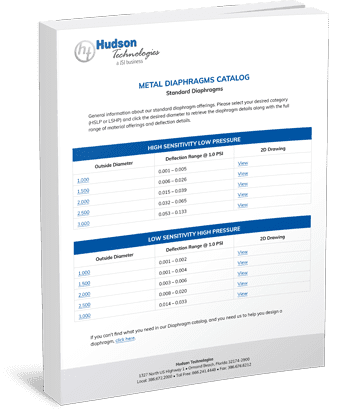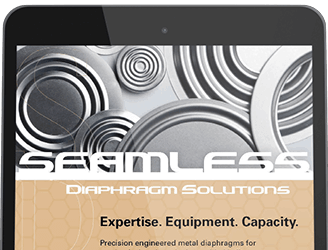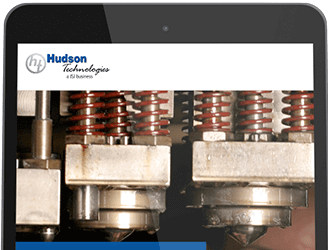Parts and equipment manufactured for use by the U.S. military and Department of Defense (DOD) must comply with stringent military specifications (Mil-Spec). Mil-Spec includes tight tolerances for dimensions of parts and the ability of equipment to withstand extreme ambient conditions in storage and in operation. Other requirements of Mil-Spec include the standardization of all materials and parts, use of unique identification (UID) labels, and stringent quality control in manufacturing. Mil-Spec guidelines require exacting standards for the following reasons:
- Harsh environments. The equipment must work flawlessly in dangerous situations, so it must be of higher quality than equipment used in similar civilian applications.
- Standardization across vendors. The military employs a large number of contractors to manufacture thousands, even millions, of pieces of the same equipment. It is crucial that there is uniformity among the parts and equipment supplied by different contractors.
- Rare materials. The operating conditions may demand the use of special metals and alloys due to high heat or other extreme environmental conditions.
- Large part volumes. The military industry is a very large sector that uses a wide variety of parts and equipment in large quantities. Sometimes these have to be supplied on little notice with short lead times.
Materials for Military and Defense Manufacturing
At Hudson Technologies, we’ve worked with a broad range of materials to create precisely engineered military and defense components. Click on the material tabs below to explore the materials and some of their common applications in the military and defense industry.
- Aluminum
- Brass
- Cold Rolled Steel
- Copper
- Cupronickel 715
- Hastelloy
- Haynes 242
- Hy-Mu 80
- Inconel
- Kovar
- Monel
- Nickel Silver Alloy
- Stainless Steel
- 17-17 PH
- Titanium

Aluminum
Pros
- Electrical and thermal conductivity
- High reflectivity
- Resistance to oxidation
- Lightweight
- Malleable
Applications
- Armour
- Vehicles
- Artillery

Brass
Pros
- Malleable
- Slicker than steel
- Corrosion resistant
- Durable
Applications
- Ammo
- Grenades

Cold Rolled Steel
Pros
- Precise, uniform manufacturing
- Smooth surfaces
- Easily formability
Applications
- Tow hooks
- Jack Components
- Protection Components
- Weapons
- Bomb Components
- Ammunition

Copper
Pros
- Conductivity and heat resistance
- Malleability and ductility
- Relatively inert
Applications
- Nuts and bolts (especially ones that encounter saltwater)
- Explosive detection equipment
- Electrical component casing

Cupronickel 715
Pros
- Conductivity and heat resistant
- Malleability and ductility
Applications
- Aircraft components
- Explosive detection equipment
- Rockets

Hastelloy
Pros
- Corrosion resistance
- Cracking resistance
- Versatility
Applications
- Jet engines
- Vehicles

Haynes 242
Pros
- High-temperature strength
- Low thermal expansion
Applications
- Seal rings
- Ducts
- Fasteners
- Rocket nozzles

Hy-Mu 80
Pros
- High permeability
- Magnetic shielding
Applications
- Transformer cores
- Tape wound toroids
- Laminations

Inconel
Pros
- Corrosion resistance
- Oxidation resistance
Applications
- Jet engines
- Vehicles

Kovar
Pros
- Low Thermal expansion
- Dimensional stability
- Airtight sealing performance
Applications
- Lids
- Lead frames
- Metal seals

Monel
Pros
- Corrosion resistance
- Mechanical strength
- Ductility
Applications
- Tubes, pipes, and rods
- Rivets
- Exhaust assemblies
- Dog tags

Nickel Silver Alloy
Pros
- Durable
- Malleable
- Cost-effective
Applications
- Screws
- Rivets
- Slide Fasteners

Stainless Steel
Pros
- Highly durable
- Budget-friendly
- High melting point
Applications
- Firearm gas tubes
- Dog Tags
- Mess kits

17-17 PH
Pros
- High strength
- Corrosion resistance
Applications
- Engines
- Exhaust manifolds
- Springs
- Washers
- Superheater tubes

Titanium
Pros
- Corrosion resistance
- Durable and strong
- Low density
- Inert
Applications
- Aircraft parts
- Missiles
- Armor plating
Metal Stamping Applications for Military and Defense
Metal stamping is a cost-effective, high-volume production technique for manufacturing three-dimensional parts from sheet metal. It can reliably create parts that have sophisticated shapes and forms with great accuracy and detail. Since the parts are made from a single sheet of metal, they do not have any seams or joints. This feature renders parts structurally sound and often aesthetically appealing. This manufacturing method is very suitable for making cylindrical components and parts.
Metal stamping military parts is ideal because the process can fabricate products with great precision, consistent quality, low weight, and high strength. This fabrication technique has the added advantage of being able to produce large quantities in a short time, which is often a necessity for the military and the DOD.
The defense sector and the military require metal stamped parts for many different applications. A few examples include:
- Caps, connectors, and couplings
- Enclosures and housings for military aircraft
- Parts for instrumentation equipment
- Relays, switches, and lighting systems
A variety of metals and alloys are used for making metal stamped parts for military and defense purposes. Some of the most commonly used metals and alloys include:
- Aluminum
- Brass
- Copper
- Cold-rolled steel
- Cupro-nickel alloy
- Stainless steel
- Shielding alloys, such as HY-MU 80
- Titanium
Hudson Technologies: Solutions for Military & Defense
Hudson Technologies has nearly 80 years of experience supplying standard and custom metal stamped parts to a wide range of industries including the military and the DOD. Hudson’s catalog of standard parts includes more than 15,000 deep-drawn metal stampings of different sizes and shapes.
We are adept at the design, prototyping and large-volume production of custom parts. Our capabilities cover sizes ranging from 0.125–12.0 inches wide, and up to 12.0 inches deep. Our certifications include AS9100D and more. We are well equipped to address the multiple challenges of manufacturing parts for the military including tight tolerances, short lead times, and in-house capabilities that range from prototype to large scale production.
Contact us today for information on our manufacturing capabilities and pricing for military metal stampings.














